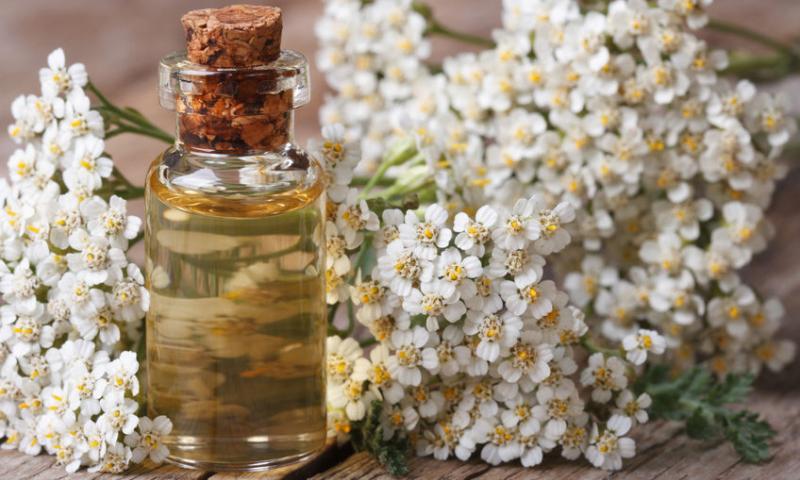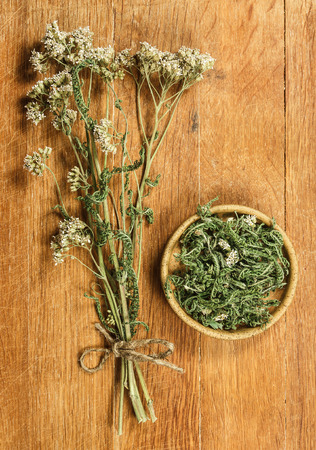 />
/>
Latin Name: Achillea millefolium
Family: Asteraceae
Genus: Achillea
Common Names: yarrow, common yarrow, 'little feather'
Origin: temperate regions of the Northern Hemisphere in Asia, Europe, and North America
Parts used: herb, flowers, leaves
Botanical information: Yarrow is an herbaceous, perennial plant. Stems are erect and simple, 20-60 cm tall. Leaves look like fuzzy pipe cleaners. They are alternate, 3-15 cm long, lanceolate, pinnate and highly dissected. Numerous flowering heads are in flat or round-topped paniculate-corymbose inflorescence. Seeds are small, about 1.5-2 mm in length. The plant reproduces both by means of seeds, and vegetatively, with the help of roots. It grows in dry areas, grasslands, alpine areas, and tundra. It blooms from May to September.
CHEMICAL COMPOSITION
Yarrow contains a huge number of active biological components. These are:
- flavones
- coumarins
- alkaloid ahilein
- organic acids (salicylic, formic, acetic and isovaleric)
- bitter principles
- tannins
- resins
- asparagine
- mineral salts
- essential oils
- carotene
- choline
- vitamins C and K
RECIPE OF YARROW TINCTURE
- 30 g of dried grass and flowers.
- 100 ml of alcohol or vodka.
- a vessel of appropriate size from a dark glass
Pour raw with alcohol and infuse for 10 days, strain.
Drink 30-40 drops 3-4 times a day before meals. It is better to mix needed amount of drops with a small quantity of water before consumption.
“Nature never goes out of style!”
*This article is for informational purposes only. We suggest consulting with a physician before using these or any other herbal supplements.
